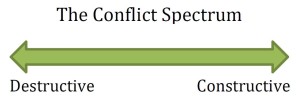Seasoned instructors and new TAs alike wonder if they have assigned the right amount of work and how to get the students to complete it. Though the general rule of thumb is to assign two hours of homework for every hour spent in class, what does that mean in terms of the number of pages to be read or homework problems to be solved? And what kind of work is most motivating and beneficial for student learning?
- “Young people today…”
With the caveat that tracking time spent studying is challenging, it seems that the time college students spend preparing for class each week remained about stable between 2000 and 2010. These recent trends also match closely with data collected in the late 1980s and early 1990s on student time use. These figures are down from a 1961 study, but that difference reflects dramatic changes in higher education (e.g. more diverse student bodies, an increase in the number of students working full- or part-time, more faculty prioritizing research over teaching as a response to institutional pressures).
- Promoting deep learning
Many instructors hope to promote deep learning, in which students take a critical stance toward the material, can draw independent conclusions, and have some theoretical understanding of the material. When students feel overburdened with the material, they are more likely to see it as unintelligible and engage in only surface learning. Deep learning requires students to have sufficient time to reflect and find their own voice in the course. If anything, restricting the scope of the course material may encourage deep learning.
- Motivation and the problem of workload vs difficulty
Students tend to perceive their difficulty of an assignment and the time they spend on it together as a measure of workload. Under conditions of higher workloads, self-motivated students benefit by engaging in deep learning. But other students feel overwhelmed by too high a perceived workload and may become discouraged. To create a course that is both motivating and challenging for different types of students, consider assignments that target only one of these conditions: assign a short task with a high degree of complexity or a longer but simpler task.
- A rule of thumb on reading speeds
Easy text = 100 words per minute
Straightforward text = 70 words per minute
Dense text = 40 words per minute
These guidelines include time for thinking, reflection, note-taking, or other interpretive activities such as answering response questions. Of course, you may need to deviate from the above suggestions based on the experience of your students and the type of material you teach. A literature class on novels will require more to be read, and a course on poetry or philosophy may benefit from even shorter readings than the above suggestions.
- Communicate with students about workload
Rather than wondering how long students are spending on the material, survey them anonymously. You can then alter the workload if necessary, or give strategies to students to improve their efficiency. Many students entering college take unnecessarily detailed or unfocused notes, do not know how to identify key points in a text (such as the thesis of a chapter), or have poor review and study strategies. Explain to students that their ability, motivation, and study behaviors work together to influence academic performance.
References:
Chambers, Ellie. “Work-Load and the Quality of Student Learning.” Studies in Higher Education 17, no. 2 (January 1, 1992): 141–53.
Kyndt, Eva et. al., “The Direct and Indirect Effect of Motivation for Learning on Students’ Approaches to Learning through the Perceptions of Workload and Task Complexity,” Higher Education Research & Development, 30, no. 2 (2011), 135-150.
McCormick, Alexander C. “It’s about Time: What to Make of Reported Declines in How Much College Students Study.” Text. Association of American Colleges & Universities, January 24, 2011. https://www.aacu.org/publications-research/periodicals/its-about-time-what-make-reported-declines-how-much-college.
Nonis, Sarah A. & Gail I. Hudson. “Academic Performance of College Students: Influence of
Time Spent Studying and Working.” Journal of Education for Business 81, no. 3 (2006), 151-159.
 In practice, conflict ranges on a spectrum from destructive (e.g. fighting in class) to constructive (a learning opportunity).
In practice, conflict ranges on a spectrum from destructive (e.g. fighting in class) to constructive (a learning opportunity).